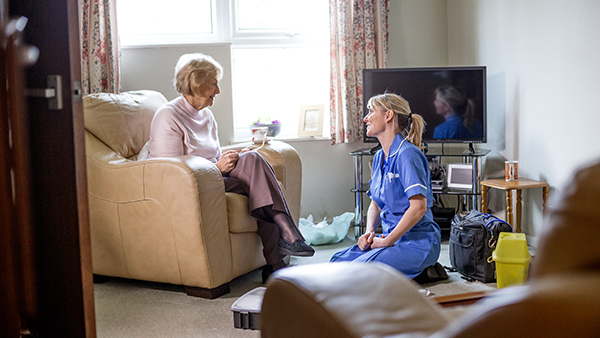In 2009, the UK population numbered 62 million: 38 million of working age, 9.2 million between 50 and 65 years, and 11.3 million over current state pension age. The forecast for 2031 is a 58 per cent increase in the number of people aged over 65, but just a 16 per cent increase in those at working age. This creates a huge imbalance between those who are earning and those likely to need care. However, the funding available for elderly care has been shrinking for some time and many local authorities have slashed budgets up to 400 per cent, with some regions reducing sheltered housing provision from £40 to just £11.75 per week.
This has been matched with a failure to ring-fence local authorities’ care budgets. The new coalition government has indicated its intention to protect health funding, but it is not anticipated that this extends to care, which is a matter of great concern.
First steps of coalition
The care sector is not afforded the same gravitas as health. This is a major challenge to reform. Secretary of State for Health, Andrew Lansley has promised to revamp the health service in a bid to "drive up standards", with spending set to increase in real terms. Policies include the development of 24-hour urgent care across England and allowing patients to register with the GP of their choice, regardless of location.
In contrast, all political parties have struggled to grapple with the rapidly growing issue of care funding. The coalition has set up an independent commission to look into social care, which will report back within a year. This positive step is a vast improvement on the timeframe set out in the previous government’s White Paper, which proposed a similar commission that would take six years to report back, not due until 2016.
Other measures which affect the elderly include an increase in retirement age and the level of basic state pensions. There are also promises to protect the winter fuel allowance and existing free services such as TV licences, bus travel, eye tests and prescriptions for the elderly. Although these provide enormous benefits to many past retirement age, they don’t even scratch the surface when it comes to the much bigger issues of paying for accommodation and care.
Both the coalition and previous Government have sought to address the issue of care by focusing on care at home. Measures are being discussed to encourage elderly people to continue living in their own homes, with personal budgets for those with long-term conditions and support for carers. However, staying in their house does not work for many older people as it ignores individuals’ physical needs and their broader, basic need for companionship. The risk is that we will create a generation of older people who are increasingly isolated from their local communities. Linked with this issue is the emotional issue of people having to sell their own houses in order to pay for residential care. This is often misrepresented by confusing the cost of providing the actual care with the cost of the residential accommodation. By creating such confusion, care at home is frequently portrayed as being more cost effective whereas in fact the converse is true.
Future approach
By investing in our care system, providing a comprehensive level of care to support and look after elderly people, we would make significant savings for the NHS by reducing the number of hospital admissions.
This means addressing some very fundamental problems including diet, loneliness and, of course, the affordability of care. One of the simplest ways of improving the health and well-being of the elderly within our communities is to ensure that they are well nourished. In my role, I constantly see the benefit of providing regular, good quality meals. Within days of moving into an Abbeyfield house, which provides a sheltered environment for elderly people, previously frail residents become energised and independent as they benefit from home cooked food.
Abbeyfield is also unveiling major plans for new developments that enable residents to retain an equity stake in the property in which they will receive their care. This provides the individual with the benefits of a holistic approach, which ensures people have companionship and are secure, while helping to address the problems that are currently associated with the funding of accommodation. In addition to this, solutions that allow residents to either purchase a property, or enter into a shared equity arrangements, help to overcome some of the emotional issues faced when selling the family home in order to receive residential care.
More fundamentally we need a complete culture change if we are to tackle the growing problem of funding elderly care. This should start with equal priority being given to the issue of care as is currently given to health. The state and individuals each have responsibilities here: the state needs to arrive at workable funding solutions whilst at the same timing raising the profile of care, but the individual needs to take some responsibility for their future care needs, just as they would for their health. For many that will include an element of financial responsibility, because the state will never be in a position of being able to pay for all. This process won’t happen overnight but plays a crucial role in finding solutions for this problem that is growing with every day.
Related articles
-
Care… the work that makes all other work possible
Richard Humphries
Most of us will need care at some point in our ever-longer lives. Richard Humphries argues that it’s time we recognised its importance and legislated and funded it properly
-
An idea worth stealing
Edward Lowe
Watching how software engineers work could revolutionise how we build products and services, and give employees more interesting and fulfilling work. Edward Lowe talks Tesla, Henry Ford and a lesson from the slaughterhouse
-
Local government transformation and change challenges post-Covid-19
Ian Burbidge
How are local government transformation and change leaders balancing short-term concerns with long-term challenges?



Join the discussion
Comments
Please login to post a comment or reply
Don't have an account? Click here to register.
It is neccessary for all to change their lives day to day. I am much agreed with you and also it is much beneficial for growth.
Canadian Pharmacy
I do find it difficult to reconcile this statement “By creating such confusion, care at home is frequently portrayed as being more cost effective whereas in fact the converse is true.
I like the idea of taking equity in the residential care facility and agree with many of the points in the article. I do find it difficult to reconcile this statement “By creating such confusion, care at home is frequently portrayed as being more cost effective whereas in fact the converse is true.” I interpret this to mean that costs such as food, electricity, gas, and council taxes etc. must be deducted from the total charge to provide transparency as to cost of (and degree of value for money of) the care “package”. The overall cost is however indivisible, the recipient of those services or their family or indeed government must meet the total cost. In this sense full pricing transparency and regulatory control of such is perhaps warranted?